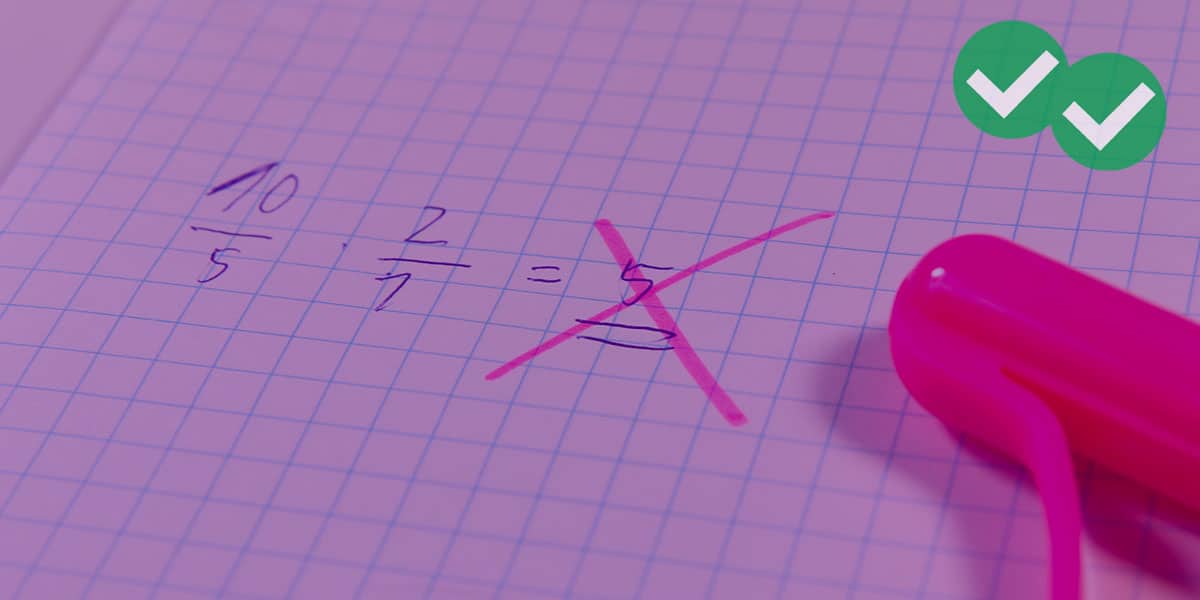
This post was updated in 2024 for the new GMAT.
What’s the biggest secret to GMAT math success? It’s simple! Identify and study the correct quantitative concepts, strategize for problem solving, and leave rote memorization at home.
The GMAT Quantitative section gives you 45 minutes to answer 21 questions. It’s an adaptive test, meaning that correct answers lead to questions of increasing difficulty. Incorrect answers have the opposite effect. Don’t let that worry you though! This is just how the test finds your math ability level.
Here’s a bit of relief! You’ll never encounter questions that require more than a basic high school understanding of quantitative concepts. Generally speaking, the GMAT Quant section tests your abilities to analyze and problem-solve rather than any advanced knowledge of mathematics.
What kind of math is on the GMAT?
There is only one type of GMAT math question: Problem Solving. Problem Solving questions are likely already very familiar to you. They require you to just work out the question and choose the correct final answer.
The Three GMAT Math Areas
The quantitative knowledge necessary to ace the GMAT consists of basic high school mathematics.
- Arithmetic: Number sense, operations on numbers, etc.
- Algebra: Basic manipulation of expressions and solving equations
- Word Problems/Applications: Word problems test arithmetic or algebra. But, remember the emphasis is on critical reasoning and understanding how to apply what you know from other areas of math.
Here is just a small sample of Magoosh video lessons with helpful GMAT Quant tips and strategies related to the four math areas:
Curious about the hardest concepts and questions you’ll encounter on the GMAT? Check out this video!
GMAT Math Tips and Quant Practice Problems
Now let’s talk about what you can do to improve your GMAT Math score! Here are a few helpful GMAT quant tips, followed by practice problems and detailed solutions, to get you right on track toward a higher score.
Tip #1 — Rely on your Critical Reasoning; Not Deep Knowledge
GMAT Quant problems test your ability to analyze data and draw conclusions, not advanced mathematical ability. As a result, the test can actually be very challenging for high-achieving students. You may have progressed through Calculus and beyond, but if you don’t have enough practice solving logical puzzles or real-world problems, then you’ll need to study up!
Tip #2 — Arithmetic Questions: Use Your Number Sense
The key to solving quantitative arithmetic questions is to rely on your number sense and avoid common pitfalls.
This is a typical problem dealing with units and ratios. Let’s use our number sense to quickly tackle this one. First, the fact that the price of flour is \(w\) dollars per \(x\) pounds, means that whatever the final answer is, the \(w\) and \(x\) need to be on opposite parts of the fraction. That’s because \(w\) per \(x\) means \(w/x\). So either that, or its reciprocal will be in your final answer. So that narrows it down to just two choices without much work! Either \(\frac{xy}{w}\) or \(\frac{w}{xy}\). Finally, the question is asking for the cost of making one cake. So let’s what happens if we allow \(y\) to vary. Suppose \(y\) is small, like \(y=1\). Then it takes a whole pound of flour to make just 1 cake. But if \(y\) is larger, say \(y=4\), then that same one pound of flour goes much further, bringing the overall cost down per cake. As \(y\) increases, the cost per cake has to decrease. That tells you immediately that \(y\) must be on the bottom of the fraction (in order to get that kind of inverse relationship). Answer: \(\frac{w}{xy}\)
Click here for the answer!
See, that wasn’t too hard, right? There are certainly other ways to work this kind of problem out. If you want to see more on this topic, here’s an excellent refresher for GMAT Quant: Rates and Ratios.
Tip #3 — Algebra Problems: Try Backsolving or Picking Numbers
Common strategies for algebra problems include backsolving and picking numbers. These techniques make it possible to solve a problem without actually solving it. In other words, you can avoid some of the heavy lifting of algebra if you can leverage the answer choices to your favor.
Backsolving works by using the answer choices to work backwards. Often this means plugging in each numerical answer choice into given equations, but it can also sometimes be useful when the answers themselves are equations.
Picking numbers is precisely that! It’s when you pick values for some or all of the variables in a problem, and work the problem with your choices. This often requires you to plug in your numbers into answer choices or Data Sufficiency statements to help eliminate choices.
Want to avoid the algebra? Let’s pick some convenient numbers for the variables. Keep in mind that \(m \neq n\). So, let’s start with \(m=2\) and \(n=1\). Plugging those into the given equation, we get: \(6x + 4y – 2y – 3x = 0\), which simplifies to: \(3x + 2y = 0\) Now we could even plug in a number for \(x\) and work out \(y\) from that (to compare with the answer choices), but there’s no need on such a simple equation. \(2y = -3x \implies y = \frac{-3x}{2}\) Answer: \(-\frac{3x}{2}\)
Click here for the answer!
Tip #4 — Word Problems: Don’t Get Lost!
Word problems tend to overlap with the other categories. These kinds of problems test your ability to assess a given situation, set up proper steps, choose the correct mathematical tools to solve the problem, and finally to obtain the best answer. It’s crucial that you don’t get lost. When you read a long word problem, jot some things down as you go. Pay attention to constants and constraints given in the problem. And identify your goal.
There’s a lot to keep track of here, and some info is just not that important. For example, you don’t need to know that one pump is a “JQ” and other other is a “JT” pump, just that there are two types and they run at different rates. They could have been called “A” and “B” or “1” and “2” for all we care. But it is a good idea to jot down “JQ” and “JT” on your scratch paper to start organizing the rest of the data. The JQ pump fills the tank in 72 hours. How much water is that? We don’t know. But you can say it’s 1 tank worth. So write “1 tank in 72 hrs.” in your JQ column. Similarly, put “1 tank in 18 hrs.” in your JT column. Now, it goes on to ask about filling up a half-full tank. So, alone the JQ would take 36 hours. But we have two JQ’s, which by themselves would cut that fill time to 18 hours. Finally, the trickiest part, what happens when you add in the JT? By itself, it takes 9 hours to fill half the tank. Let’s bring in our number sense. Every time unit, the JQ’s are going to fill only half as much water as the JT, because the JT is pumping twice as fast. When the tank fills, two-thirds of the water was pumped in by the JT, and only a third of it by the two JT pumps. So either way you look at it, 6 hours are needed — either one third of 18 hours, or 2/3 of 9 hours. Answer: 6
Click here for the answer!
Struggling to finish the quantitative section within the time limit? Learn about GMAT Timing Strategy in our ultimate pacing guide!
Wrapping it All Up
So now you know what topics to expect on the GMAT Math section! A few final words of advice: Know your fundamentals. Don’t try to do everything in your head. Instead, write out your scratch work during the test. Lastly, be sure to get in plenty of practice, and learn from your mistakes.
If you need to brush up on your math or strengthen your Quant skills, Magoosh GMAT can help! Get high-quality, affordable test prep with over 200 video lessons and 800 practice questions. Try us for free with a 1-week trial!
Happy studying!




Leave a Reply